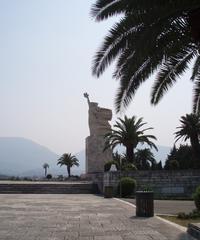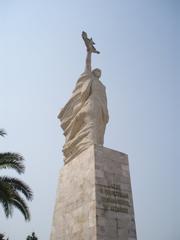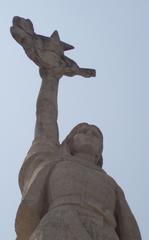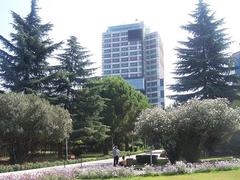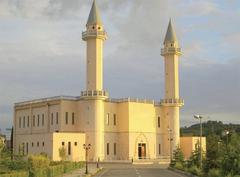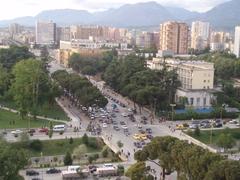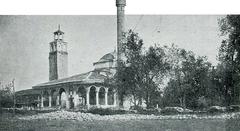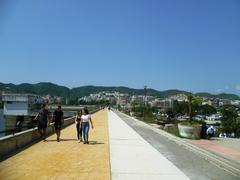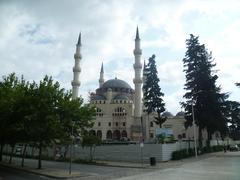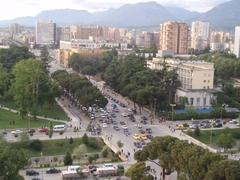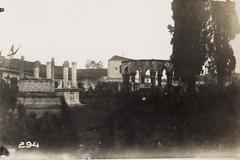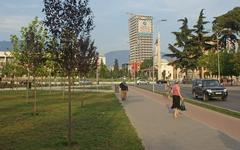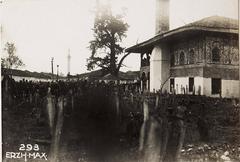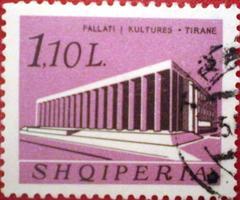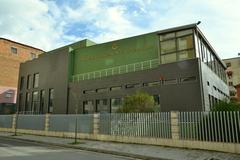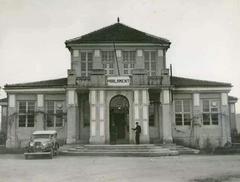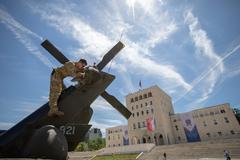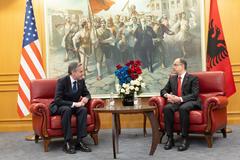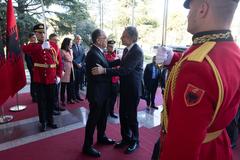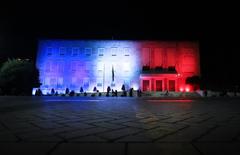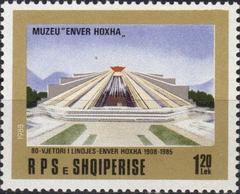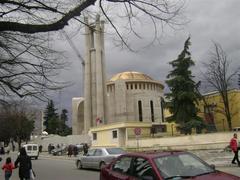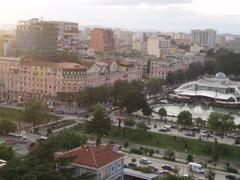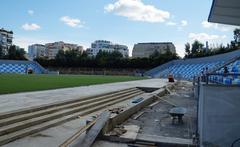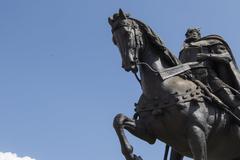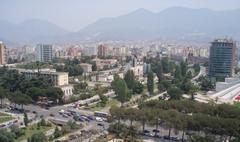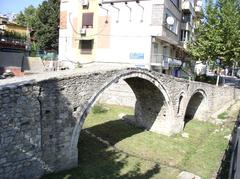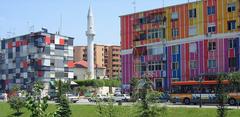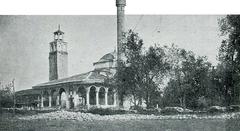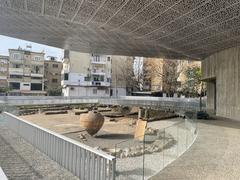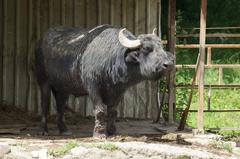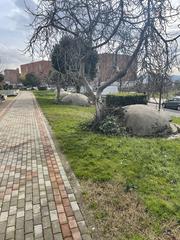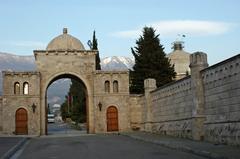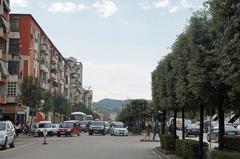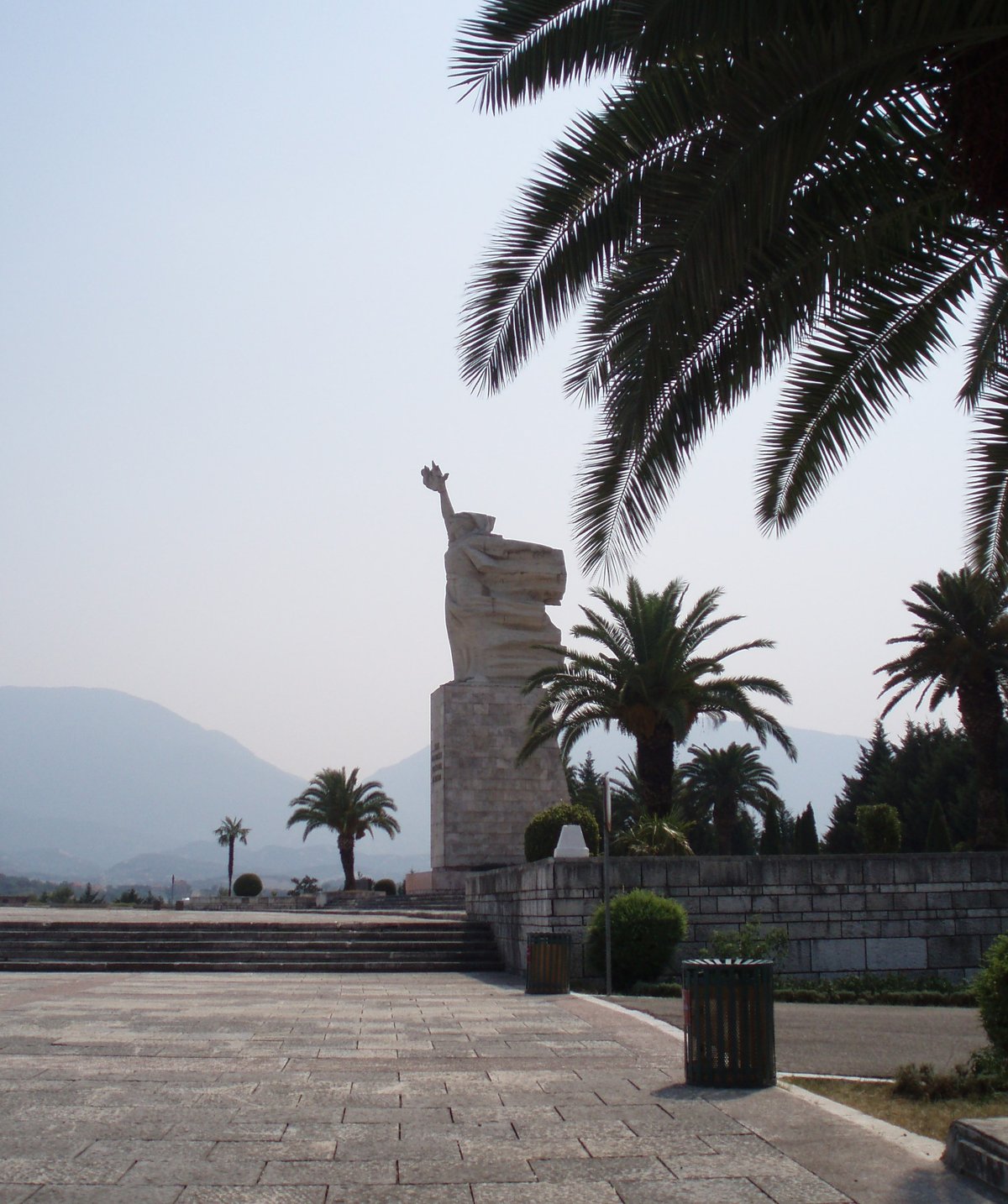
Mother Albania: Visiting Hours, Tickets, and Historical Guide to Tirana’s Iconic Monument
Date: 14/06/2025
Introduction
Mother Albania (Nëna Shqipëri) stands as a powerful emblem of Albanian identity, sacrifice, and national pride. Perched atop a hill in the National Martyrs’ Cemetery in Tirana, this monumental statue not only dominates the city’s skyline but also serves as a poignant reminder of Albania’s turbulent 20th-century history. Erected in 1971 to honor the partisans who fought against fascist occupation during World War II, Mother Albania invites visitors to reflect on themes of heroism, motherhood, and unity. This comprehensive guide provides everything you need to know about visiting Mother Albania, from practical details to cultural context and nearby attractions.
Historical Background
Origins and Context
Mother Albania was inaugurated in 1971 within the Martyrs of the Nation Cemetery (Varrezat e Dëshmorëve të Kombit), the largest cemetery in Albania dedicated to the memory of those who fell during the anti-fascist struggle of World War II. Designed by sculptors Kristaq Rama, Muntaz Dhrami, and Shaban Hadëri, the statue was intended to personify the nation as a nurturing yet resolute mother, eternally vigilant over her children (Wikipedia). The monument’s establishment was a significant state project during the communist regime, symbolizing both national unity and socialist ideals.
Symbolism and Artistic Features
Standing 12 meters high atop a 3-meter pedestal, Mother Albania is crafted in socialist-realist style from concrete. The statue’s posture—her right arm raised holding a laurel wreath and a star—carries deep symbolism. The laurel wreath represents victory and remembrance, while the star alludes to the socialist era (Pine.al). The pedestal is inscribed with “Lavdi e përjetshme dëshmorëve të atdheut” (“Eternal glory to the martyrs of the fatherland”), underscoring its commemorative purpose.
Evolution of the Monument’s Role
Originally serving as a focal point for communist-era ceremonies, Mother Albania’s significance has evolved since the fall of communism. Today, it transcends political ideology, functioning as a broader symbol of national unity, resilience, and collective memory. The cemetery grounds also reflect Albania’s complex history, including graves of figures from both the anti-fascist and anti-communist movements (Nomads Travel Guide).
Practical Visitor Information
Location and Access
Mother Albania is located in the southeast of Tirana, approximately 2.5–3 km from Skanderbeg Square, accessible via Rruga e Elbasanit. The monument sits within the National Martyrs’ Cemetery, overlooking the city and offering panoramic views of Tirana and its surroundings.
Getting there:
- By taxi: Widely available; a short ride from the city center.
- By bus: Local buses travel along Rruga e Elbasanit; ask for the stop near “Varrezat e Dëshmorëve.”
- On foot: A 30–40 minute uphill walk from Skanderbeg Square, suitable for those who enjoy walking and wish to take in the scenery.
Visiting Hours
- Open daily, year-round: From sunrise to sunset. Recommended visiting times are between 8:00 AM and 7:00 PM for safety and the best views.
- Admission: Free of charge; no tickets required.
Accessibility
The cemetery and monument area are generally accessible via paved paths, though the approach includes a moderate incline. The main paths are suitable for wheelchairs, but visitors with mobility challenges may prefer to use private transport to the upper entrance.
Facilities
- There are no restrooms or cafés within the cemetery grounds; nearest facilities are available along Rruga e Elbasanit.
- Parking is available near the entrance, but may be limited, especially during commemorative events.
Guided Tours
Guided tours that include Mother Albania and other Tirana historical sites can be booked through local tour operators and the Tirana Tourist Information Centre. Tours offer valuable historical context and are recommended for those seeking a deeper understanding of the site (Visit Tirana).
What to Expect During Your Visit
Upon arrival, visitors enter a solemn, landscaped avenue lined with rows of white gravestones, leading to the imposing figure of Mother Albania. The atmosphere is tranquil, inviting quiet reflection. The monument’s elevated position makes it a prime spot for panoramic photography, particularly at sunrise or sunset.
Visitor Etiquette:
- Maintain respectful silence; this is a site of remembrance.
- Modest attire is recommended.
- Photography is allowed, but climbing on the monument or disturbing graves is strictly prohibited.
- On national holidays like Liberation Day (November 29) and Martyrs’ Day (May 5), expect larger crowds and official ceremonies.
Nearby Attractions
Mother Albania is ideally situated for exploring other Tirana landmarks:
- Grand Park of Tirana: A large green space with a lake and walking trails, perfect for relaxing after your visit (JJ Bucket List Travellers).
- Skanderbeg Square: The city’s central plaza, home to the National History Museum and the Skanderbeg Monument.
- Bunk’Art Museums and the Pyramid of Tirana: Not far from the monument; both explore Albania’s recent history and offer engaging exhibitions.
Cultural and National Significance
The Mother Albania monument is a central site for state ceremonies and commemorations. Its maternal imagery resonates with the Albanian concept of the nation as a protective, nurturing mother, a motif echoed in similar monuments across Eastern Europe (Balkanist). While rooted in socialist-realist art and originally intended as a propaganda tool, the statue now serves as a unifying national symbol for all Albanians.
Safety and Security
The area is generally safe, with regular patrols by local authorities. Standard precautions regarding personal belongings are advised. For the best experience, visit during daylight hours rather than alone at night.
Tips for an Enriching Visit
- Allocate at least 30–60 minutes for your visit to allow time for reflection, photography, and exploration of the grounds.
- Spring and autumn offer the most pleasant weather for walking and sightseeing (TripJive).
- Learn a few Albanian phrases—such as “Faleminderit” (Thank you)—for a more engaging experience (Visit Tirana Practical Info).
Frequently Asked Questions (FAQ)
Q: What are the visiting hours for Mother Albania?
A: The monument and cemetery are open daily from sunrise to sunset.
Q: Is there an entrance fee?
A: No, visiting Mother Albania is free of charge.
Q: Are there guided tours available?
A: Yes, guided tours can be arranged through local tour operators or the Tirana Tourist Information Centre.
Q: Is the site accessible for people with disabilities?
A: Main paths are paved, but the incline may be challenging; private transport to the upper entrance is recommended for those with limited mobility.
Q: Can I take photos at the monument?
A: Yes, photography is permitted, but drones may be restricted.
Q: What other attractions are nearby?
A: Skanderbeg Square, Grand Park of Tirana, Bunk’Art museums, and the Pyramid of Tirana are all within easy reach.
Visuals and Media Suggestions
- Mother Albania statue overlooking Martyrs of the Nation Cemetery in Tirana
- Panoramic view of Tirana city from Mother Albania monument
- Visitors laying wreaths at Mother Albania on Liberation Day
For an interactive map, see Mother Albania on Google Maps.
Summary and Final Tips
Mother Albania remains a compelling testament to Albania’s resilience, unity, and historical memory. Beyond its artistic and architectural significance, its role as a living site of remembrance and reflection makes it an essential stop for anyone seeking to understand Tirana’s—and Albania’s—cultural fabric. Plan your visit during daylight hours, consider a guided tour for deeper insight, and explore the nearby parks and museums to enrich your experience.
For up-to-date information and guided audio tours, download the Audiala app and follow us on social media. Respect the solemnity of this national monument, and allow yourself time to reflect on the sacrifices and stories woven into Albania’s past.
References
- United Albania - Tirana History
- Koha.net Article on Mother Albania
- Salt in Our Hair - Tirana Travel Guide
- Mother Albania (statue) - Wikipedia
- Mother Albania Monument - Pine.al
- Finding Tirana’s Communist Past - Nomads Travel Guide
- National Mothers of Socialism - Balkanist
- The Rich Heritage of Albanian Sculpture - Mexicohistorico
- Things to Do: Monuments & Cultural Sites - Visit Tirana
- Tirana Tourist Information Centre
- Best Time to Visit Tirana - TripJive
- Free Things To Do Tirana - JJ Bucket List Travellers
- Tirana Tourist Information - HikersBay
